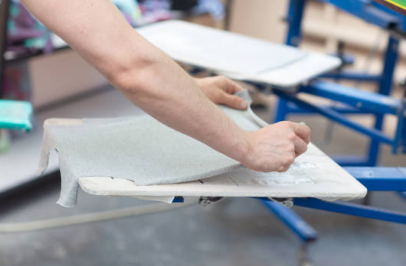Sommario
Screen Printing vs. Digital Printing: How to Choose the Right Method for Your Needs
Cos'è la serigrafia?
Screen printing uses mesh screens to transfer ink onto materials like fabric, paper, or plastic. Each color in a design requires a separate screen, and ink is pressed through the stencil-like mesh onto the substrate.
Professionisti:
- Cost-effective for bulk orders (e.g., $1.50/shirt for 1,000 units).
- Vibrant, opaque colors on dark fabrics (e.g., plastisol inks).
- Durable prints that withstand 50+ washes.
Contro:
- High setup costs ($50–$200 per screen).
- Limited to simple designs with fewer colors.
Il migliore per: High-volume apparel (e.g., event T-shirts, sports uniforms).
What is Digital Printing?
Digital printing (e.g., Direct-to-Garment/DTG) uses inkjet technology to print designs directly onto materials without screens. It’s ideal for complex, full-color artwork.
Professionisti:
- No setup fees, perfect for small batches (e.g., $5/shirt for 50 units).
- Unlimited colors and gradients (photorealistic quality).
- Rapida inversione di tendenza (2–5 days).
Contro:
- Higher per-unit costs for bulk.
- Less durable on dark fabrics (fades after 20–30 washes).
Il migliore per: Custom gifts, prototypes, or polyester blends. Key Differences Between Screen and Digital Printing
- Costo:
- Screen printing becomes cheaper at scale (1,000+ units).
- Digital suits low-volume orders (1–100 units).
- Design Complexity:
- Screen: Best for bold, simple logos.
- Digital: Handles intricate, multicolored designs.
- Durata:
- Screen prints outlast digital by 2–3x.
- Turnaround:
- Digital is faster; screen requires weeks for setup.

When to Choose Screen Printing
- Use Cases:
- Bulk orders (500+ units).
- Dark fabrics needing opaque colors.
- Long-lasting merchandise (e.g., workwear, promotional items).
Esempio: A music festival orders 2,000 cotton T-shirts with a four-color logo.
When to Choose Digital Printing
- Use Cases:
- Small batches (1–100 units).
- Detailed artwork (e.g., family photos on hoodies).
- Test runs before bulk production.
Esempio: An Etsy seller prints 30 personalized tote bags with watercolor designs.
Hybrid Printing: Combining Both Methods
Hybrid approaches use screen printing for base layers and digital for fine details.
Esempio: A brand screen-prints a white underbase on black shirts and adds gradient details digitally.
Tabular Data: Quick Comparison
| Fattore | Serigrafia | Digital Printing |
|---|---|---|
| Cost (100 units) | $2–$5/shirt | $8–$15/shirt |
| Design Colors | ≤6 spot colors | Unlimited CMYK |
| Durata | 50+ lavaggi | 20–30 washes |
| Turnaround | 2–3 weeks | 2–5 days |

FAQ
Can digital printing match screen printing’s vibrancy?
On light fabrics, yes. Dark fabrics require screen printing for opacity.
Which method is eco-friendly?
Digital (less waste), but water-based screen inks are improving
SUGGERIMENTI
- Order samples to test print quality.
- Use digital for prototypes, screen for bulk.
- For gradients, combine both methods.
Conclusione
Screen printing excels in durability and bulk savings, while digital offers flexibility for small batches. Match your choice to project size, fabric, and design needs.
Suggerimento professionale: Partner with a printer like DTG2Go for hybrid solutions. Start with a test run to ensure quality!
This structure balances SEO, clarity, and actionable insights, directly addressing user intent with data-driven recommendations.



